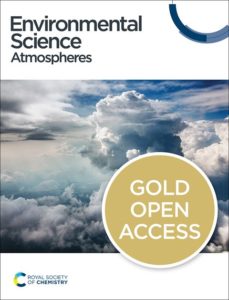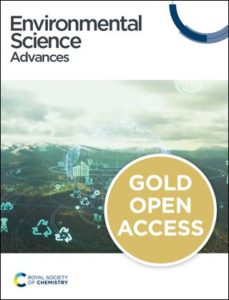
Dr James Weber received his PhD from the University of Cambridge in 2021 under the supervision of Professor Alex Archibald. He then held a post-doctoral research position in Dr Maria Val Martin’s group at the University of Sheffield before beginning his Lectureship in Atmospheric Radiation, Composition and Climate at the University of Reading in 2024.
Read James’ Emerging Investigator Series article “UK air quality showed clear improvement from 2015 to 2024 but breaching of targets remains very common” and read more about him in the interview below:
How has your research evolved from the first article you published, to your latest article on UK air quality?
My first paper was very chemistry-heavy and modelled the gas phase reactions of alpha-pinene (C10H16) oxidation, specifically reactions of peroxy radicals. The motivation behind this was that these reactions could yield species which were sufficiently involatile to nucleate new aerosol particles, with implications for aerosol and cloud radiative forcing, particularly in the pre-industrial period. I followed this with studies using a global climate model, UKESM, to examine how alpha-pinene and other biogenic volatile organic compounds (BVOCs) influence atmospheric composition and climate, including in the context of reforestation efforts for climate change mitigation. My interest in air quality started when analysing the impact of the Sheffield clean air zone, introduced in February 2023, and I have maintained an interest in both climate modelling and air quality since.
What aspect of your work are you most excited about at the moment?
I’m particularly interested in climate change mitigation strategies like reforestation and types of geo-engineering. I simulate these using UKESM and consider different deployment scenarios, how much warming they could feasibly offset and how these strategies might in turn be affected by climate change.
In your opinion, what are the most important questions to be asked/answered in this field of research?
A lot of faith is placed in the idea of geo-engineering and certain other climate change mitigation strategies, but there are large uncertainties associated with them. For example, how much warming can they offset in a realistic, rather than idealised, deployment? In my view, these are some of the most important questions to ask in climate science as the policy relevance is substantial.
What do you find most challenging about your research?
Climate science is, by its very nature, interdisciplinary and it can be challenging to build effective collaborations with colleagues with the right expertise. Ultimately, it is worth it however, as better science will result.
How do you feel about Environmental Science: Atmospheres as a place to publish?
The review process was transparent, the online portal was easy to use, and the subject matter is very relevant to my research.
In which upcoming conferences or events may our readers meet you?
I plan to go to the CACTI meeting in September 2025 in Exeter and the CMIP conference in Japan in March 2026.
How do you spend your spare time?
Running and doing badly in pub quizzes with friends.
Which profession would you choose if you were not a scientist?
Sports journalism.
Can you share one piece of career-related advice or wisdom with other early career scientists?
It’s not what you don’t know that gets you in trouble, it’s the thing you know for certain that just isn’t correct (Mark Twain, I think). In other words, regularly assess your fundamental knowledge and reasoning.


 📢
📢 




